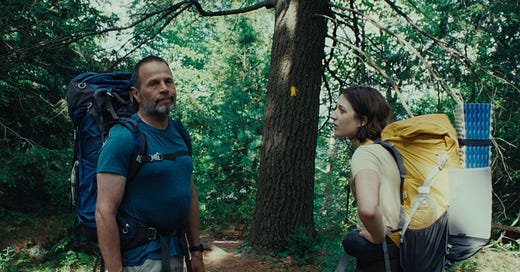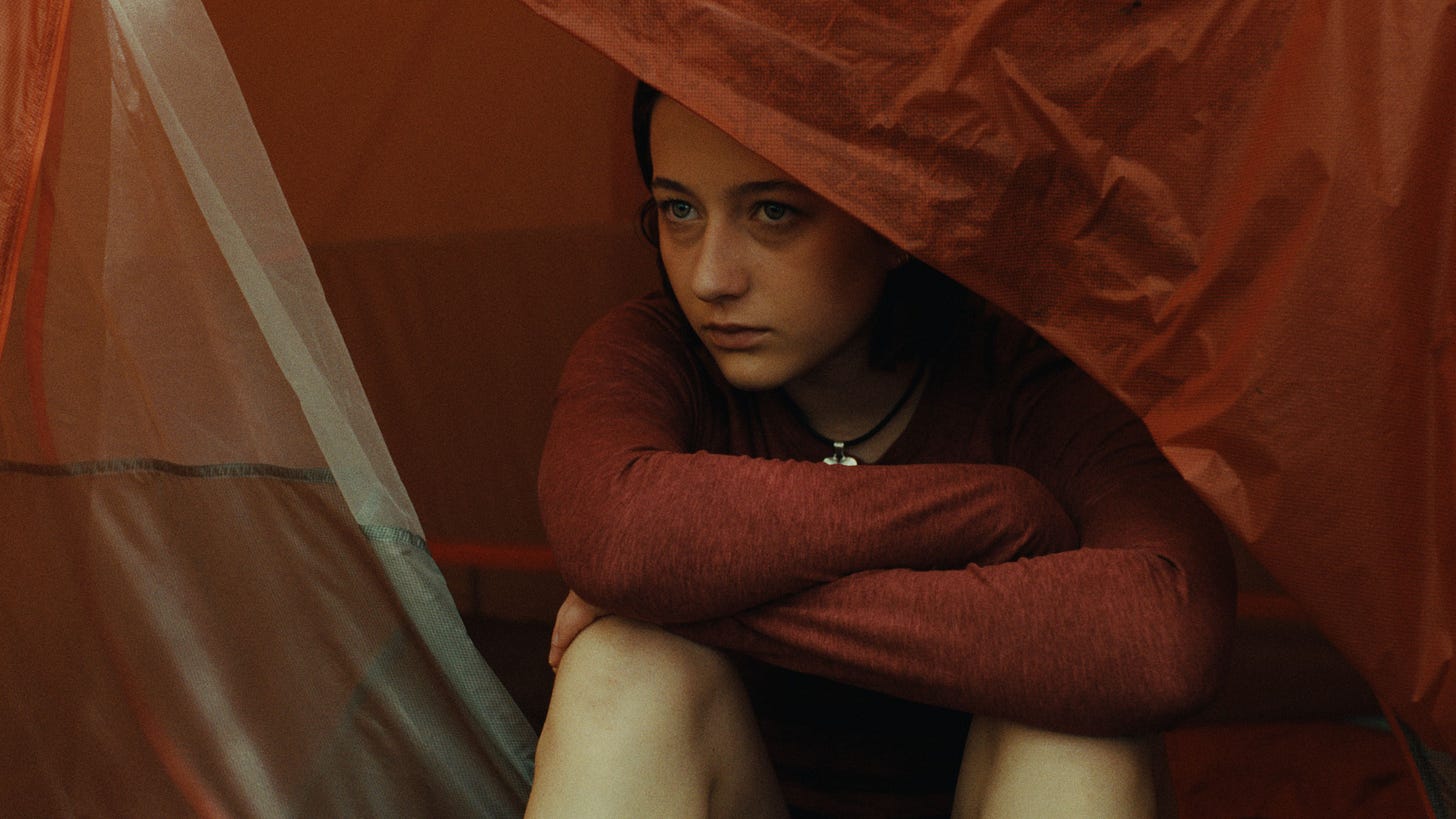How India Donaldson Knew the Key Scene In 'Good One' Worked
Donaldson talks about being inspired by Kelly Reichardt, her favorite types of characters, and building a sense of patience into a short shoot.
Hello! Welcome to Nothing Bogus, an Indie Film Listings+ newsletter. The + is commentary, interviews, dispatches, tutorials, and other groovy stuff. I’m going to start with the +. If you subscribed for the listings and only the listings, scroll as fast as you can to the bottom of this email. If you came for the +, no scrolling necessary :)
During the pandemic, while spending time living with her family — and in particular, her two teenage half-siblings — in her childhood home, India Donaldson began to reflect on her teenage years. Though Donaldson’s prior short films tended to center around childish adults, she’d never “thought about making a film about a teenager before that,” she says.
At the time, Donaldson had been trying to get a feature off the ground for a long time. “When COVID hit, it just seemed that much harder to make an independent film,” she says. “But it felt even more urgent that I do it.” So Donaldson leaned into the teenage headspace she was occupying, while also thinking hard about scale. “How can I make a movie that is not totally crushing, with a small group of people and a few characters?” she remembers thinking.
What emerged was Good One. The film — which premiered at Sundance, and which I caught at New Directors/New Films — places a 17-year-old girl named Sam (Lily Collias in one of the year’s great breakthrough performances) on a backpacking trip with her father, Chris (James Le Gros), and his old friend, Matt (Danny McCarthy). Like the protagonists of Donaldson’s short films, Chris and Matt are somewhat oblivious people who are very comfortable taking up space. Donaldson likes these sorts of characters because they force the people around them to react or adjust to them. In Good One, that dynamic is heightened by the power imbalance in the characters’ identities. But even as the stakes escalate and characters transgress, Donaldson’s film remains nuanced and surprising. This week, I spoke to Donaldson about being inspired by Kelly Reichardt, building a sense of patience into a short shoot, and the moment she knew the movie’s climactic moment worked.
This movie primarily takes place within the woods. It struck me that the woods is this potentially endless space that's all more or less the same. So was it tough to write the characters going from Point A to Point B, and to keep it interesting?
I think a big part of it was finding a location, or in our case two locations, that were varied enough that we could create a feeling that they were on a journey. Enough variation within the sameness. And there were points in the script that were specific. I knew we needed a place that would feel like high elevation because they get cell service again. There were certain requirements of the script, where we had to find locations that fit that. But most of it was creating a sense of movement in the journey. But it was also kind of nice and allowed us to move quickly because you can point the camera in any direction and it feels continuous.
One of the things I love about the movie is that everything that comes after the climactic event isn't predictable. It's so nuanced and specific. I'm curious about how that whole section evolved in the writing.
The two things that were always there were what Matt (Danny McCarthy) says and how the dad, Chris (James Le Gros), reacts — or versions of how the dad reacts. I felt like if you put a girl on a trip with two guys, there are certain things you'll be afraid of happening. You're up against cultural expectations. Whether or not you see what's coming with Matt, there's always some people who will feel that it's a possibility. But I felt like there was more room to be free of our cultural expectations in the second hammer. How the dad reacts.
But ultimately how she reacts is the piece of it that changed the most from the beginning of the script to the final execution of the movie. The rock piece of it was the very last thing I added to the script, maybe while we were already almost on our way towards making it.
How did that rock piece come into it?
I've been on a hike and seen those rock towers. And it was a reminder that people do this. And why do they do this? It's this little mark that you make as you pass through this place. It's so interesting that human beings feel the need to make that gesture. So I was interested in that as a visual element for the movie. And then already baked into the movie thematically was weight. It’s there in everything they're carrying. The dad is obsessed with the weight of his pack and not being burdened. And that plays into his behavior. And Sam (Lily Collias) is saddled with all this emotional weight that she didn't ask for. So one day it just popped into my mind that maybe she's not someone who would have the words to say exactly what she means in the moment — to give it to them back — but this passive aggressive gesture is more realistic. And thinking about the shorts I've made, something that's interested me is how people express themselves through gestures that are adjacent to how they feel.
Everything in the movie hinges on that scene at the campfire. When and how did you feel like it worked?
Keep reading with a 7-day free trial
Subscribe to Nothing Bogus to keep reading this post and get 7 days of free access to the full post archives.






